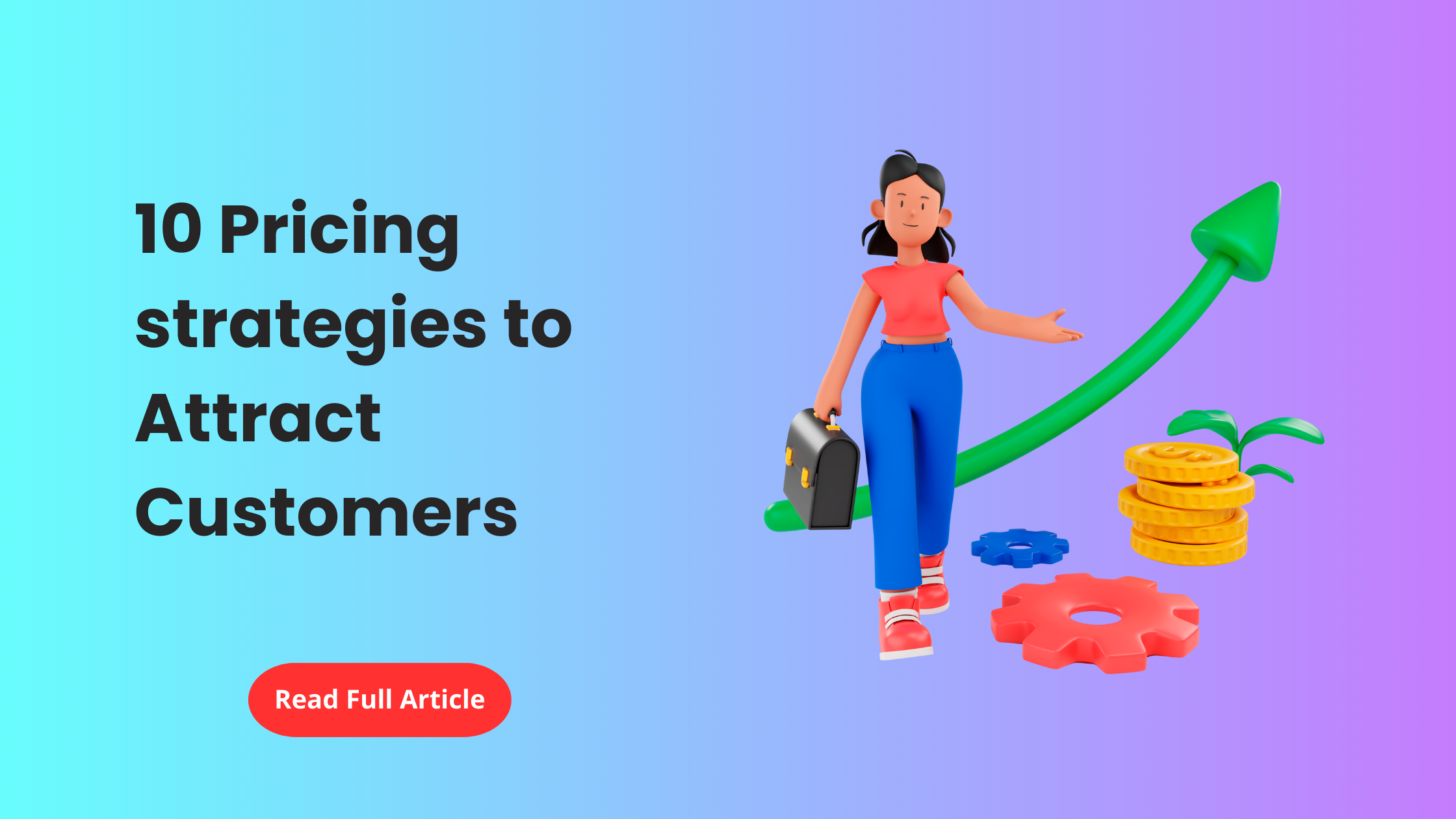Strategies To Attract Customers with Effective Pricing Strategies
As a small business owner, pricing your products or services can be challenging. You want to make sure that you are making a profit, but at the same time, you don't want to price yourself out of the market. Pricing is a critical aspect of any business, and small businesses must choose their pricing strategies carefully to attract and retain customers. Pricing strategies involve setting prices for products and services based on factors such as production costs, competition, and customer demand. In this blog post, we will discuss different pricing strategies that small businesses can follow to attract customers.
1. Cost-Plus Pricing
This pricing strategy involves adding a markup to the cost of your products or services. To determine the selling price, you need to calculate the total cost of producing your products or services and then add a percentage markup to cover your overhead expenses and profit margin. For example, if it costs you ₹500 to produce a product, and you want to make a 25% profit, you would sell the product for ₹625 (₹500 + 25% markup).
2. Value-Based Pricing
This pricing strategy focuses on the perceived value of your products or services to your customers. Value-based pricing involves setting your prices based on what your customers are willing to pay for your products or services. For example, a high-end restaurant may charge more for their menu items because they offer a premium dining experience that is perceived as valuable by their customers.
3. Penetration Pricing
This pricing strategy involves setting low prices for your products or services to penetrate the market and attract customers. The idea is to gain market share by offering lower prices than your competitors. For example, a new coffee shop may offer a discount on their coffee for the first month of business to attract customers.
4. Premium Pricing
This pricing strategy involves setting higher prices for your products or services to position your brand as a premium or luxury option in the market. Premium pricing is often used by high-end brands to create an image of exclusivity and luxury. For example, luxury car brands such as Rolls Royce and Bentley charge premium prices for their vehicles because they are positioned as luxury options. This can also be referred as market milking pricing strategy. Luxury goods, such as high-end watches or designer clothing are often priced high, even as demand and competition increase, because customers are willing to pay a premium for the perceived value and exclusivity of the product.
5. Market Skimming
Market skimming is a pricing strategy that involves setting high prices for new products or services with unique features or benefits. The goal is to maximize profits by targeting early adopters and customers who are willing to pay a premium for the product or service. Once demand from these customers has been satisfied, prices can be lowered to attract more price-sensitive customers. An example of market skimming is the launch of a new smartphone with advanced features at a premium price. The manufacturer can make a profit by targeting early adopters and then lower prices to attract a broader market.
6. Psychological Pricing
This pricing strategy involves setting prices that appeal to the psychology of your customers. For example, setting a price that ends in 99 is a common psychological pricing tactic because it makes the price seem lower than it is. Another example is offering a product for ₹499 instead of ₹500.
7. Dynamic Pricing
Dynamic pricing is a pricing strategy that involves changing prices based on market demand and other external factors. For example, a small business that provides services such as lawn care might charge higher prices during peak season when demand is high and lower prices during the off-season. This pricing strategy requires real-time data and can be challenging to implement without the use of sophisticated pricing software.
8. Freemium Pricing
Freemium pricing is a pricing strategy that involves offering a basic version of a product or service for free and charging for premium features or services. For example, a small business that develops a mobile app might offer a basic version for free and charge for premium features such as ad-free usage or additional features. This pricing strategy can increase customer acquisition and retention.
9. Razor-Blade Pricing
Razor-blade pricing is a pricing strategy that involves selling a product at a low price and making a profit on the sale of related products or services. The idea is to get customers to buy a product at a low price and then generate profits from the ongoing sale of complementary products or services. One classic example of razor-blade pricing is the sale of printers and ink cartridges. Printers are often sold at a low price, while the ink cartridges are sold at a much higher price. The printer manufacturer makes its profit on the sale of the ink cartridges.
10. Bundle Pricing
Bundle pricing is a pricing strategy that involves offering discounts for purchasing multiple products or services together. For example, a small business that sells handmade jewelry might offer a discount for customers who purchase a necklace and earrings together. This pricing strategy can increase sales and encourage customers to purchase more products.
